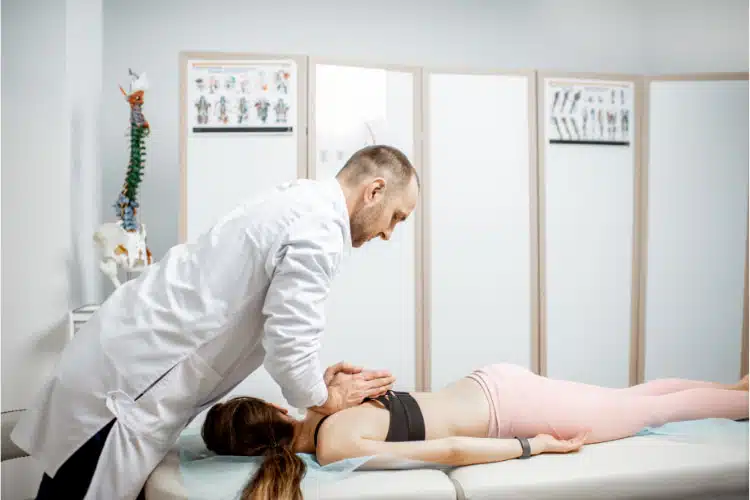
Effective Pain Management Techniques for Sports Injuries
Are you a seasoned athlete or a sports enthusiast experiencing pain?
Managing pain from sports injuries is significant for your performance and overall wellness. Injuries can have an emotional and psychological impact as well.
Addressing pain right away is critical to preventing additional complications and speeding up healing. Effective pain management techniques for sports injuries are the key to regaining mobility, strength, and confidence.
Let us explore them in this blog.
Common Types of Sports Injuries
Sports injuries are part of reality, no matter what sport or level you play. Understanding the common types of sports injuries is essential for you to treat and avoid them effectively.
Contusions
Contusions are bruises caused by a direct blow or impact to the muscles or connective tissues. They occur when blood vessels beneath the skin rupture, leading to discoloration, swelling, and tenderness in the affected area.
Strains

A strain happens when you pull or tear a muscle or a tendon, the tissue that connects muscles to bones. It could happen for several reasons, such as poor body mechanics or repetitive motion.
Sprains
A sprain, on the other hand, involves the stretching or tearing of the ligament, the connective tissue between bones. Falling or moving with an incorrect form can cause a sprain.
Fractures
Fractures are breaks in the bones. A few types of fracture include the following:
- A stress fracture is a small, vulnerable crack caused by overuse.
- A hairline fracture is a thin crack running through the bone.
- A compound fracture is a bone that breaks through the skin.
Impact from falls or crashes is almost always the cause of fractures. Repetitive motion can also lead to a stress fracture, in particular.
Dislocations
Dislocations happen when the bones in a joint break out of their normal positions, often due to sudden impact or excessive force. They cause intense pain, swelling, and instability in the affected joint.
Untreated sports injuries could have significant consequences. They can impair your ability to perform at your best and lead to long-term disability or chronic pain. Additionally, untreated injuries might not heal properly, which may lead to reinjury and potentially a more severe or even permanent injury.
Pain Management Techniques
Sports-related injuries are generally painful, and they require effective pain management programs to facilitate recovery and restore functionality.
Luckily, Core Health and Spine Rehabilitation comprehensive pain management for sports injury recovery in The Woodlands.
Modalities for Pain Relief
Several modalities offer effective relief when managing pain related to sports injuries. These pain management strategies for sports injuries combine at-home remedies and noninvasive therapies.
Cold Therapy
This therapy numbs pain, minimizes swelling, and reduces bleeding. It is the best pain relief to apply immediately after an injury or during the first 48 hours. Common administrations include cold compresses, ice packs, or ice baths.
Apply cold therapy to the injured body part for at least 20–30 minutes per session and take breaks to avoid frostbite.
Heat Therapy
Heat therapy increases blood flow, reduces stiffness, and relaxes muscles. This therapy is available in different mediums, such as heating pads, warm baths, and hot packs.
Do not use heat therapy in the first 48 hours of the injury as it may worsen the swelling.
Electrical Stimulation (TENS)
Transcutaneous electrical nerve stimulation (TENS) uses noninvasive devices that deliver electrical impulses to block or alter pain signals and provide temporary relief.
Proper guidance from a healthcare professional is essential when using TENS. The professional (or you, with their supervision) performs electrical stimulation by placing electrodes within the affected area and adjusting the frequency.
Manual Therapy Techniques
Manual therapy techniques play a significant role in managing sports-related injuries. They offer targeted relief and promote complete wellness.
Massage Therapy

Massage therapy is popular for its ability to induce relaxation, reduce muscle tension, and improve circulation. Massage therapy is also very effective for supporting recovery.
The leading massage therapies include the following:
- Swedish massage
- Deep-tissue massage
- Trigger-point therapy
You can have a massage pre- and post-exercise to prevent injury and reduce muscle soreness. It promotes overall healing and alleviates discomfort.
Dry Needling
Dry needling is a therapeutic technique that involves inserting thin needles into trigger points within muscles or soft tissues. It aims to alleviate pain, improve range of motion, and promote healing by releasing tension and stimulating blood flow.
Despite similarities to acupuncture, dry needling focuses on anatomy and neurophysiology rather than traditional Chinese medicine principles. It's commonly used to complement physical therapy and sports medicine.
Myofascial Release
Myofascial release is a method that focuses on the fascia, a thin layer of connective tissue that surrounds your bones, muscles, and organs. Releasing adhesions and tension within the fascia may involve self-myofascial release with massage balls, foam rolling, and professional manual therapy interventions.
These pain management techniques for sports injuries are perfect for reducing muscle stiffness and enhancing overall movement efficiency, making them a valuable option if you’re recovering from sports injuries.
Chiropractic Care
Chiropractic care can relieve pain associated with musculoskeletal injuries and offer a holistic approach to effectively managing pain caused by sports injuries. It focuses on spinal alignment to improve mobility, enhance function, and alleviate pain due to sports injuries. They are also ideal in enhancing nerve function, which allows the body to heal naturally.
Physical Rehabilitation and Exercise Programs

Stretching is the best way to improve flexibility, alleviate muscle tension, and enhance overall function. Strengthening exercises help stabilize the joints and muscles to prevent further injuries. Hamstring stretch and quadricep strengthening are prime examples of these exercises.
Range-of-motion exercises are also ideal for restoring and maintaining joint mobility by preventing muscle contraction and stiffness. Ankle alphabet and shoulder circles are perfect motion exercises that promote flexibility.
Moreover, proprioceptive training exercises enhance coordination, balance, and joint stability. Single-leg stance and balance pad exercises help the body develop awareness of its movement and position.
Importance of Rest and Recovery
Rest and recovery are vital components of the healing process for sports injuries. They aid in repairing tissues, alleviating inflammation, and restoring the body's overall function. Proper rest means giving your body enough time to recover and heal. It allows the damaged muscle fibers to rebuild and repair, promotes growth, and improves strength. Adequate rest also reduces stress on injured ligaments and tendons, allowing them to regain stability.
Conclusion
Recognizing common sports injuries and exploring pain management techniques for sports injuries are significant in addressing pain. Proactive injury prevention measures, including proper warm-up, technique correction, and conditioning, are also crucial in reducing the risk of sports injuries.
Prioritize your health and seek professional guidance when managing sports injuries. Core Health Spine & Rehabilitation in The Woodlands offers comprehensive pain management services tailored to athletes’ needs, providing holistic care and specialized treatments to support optimal recovery outcomes.
Schedule an appointment now!



